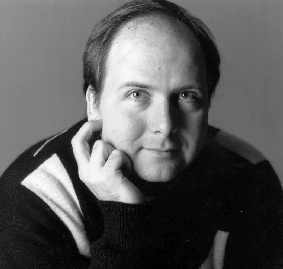
Spring/Summer 1999
Volume 6, Issue 2
Spring/Summer 1998
Volume
3, Issue 1
January 1995
Volume
2, Issue 4
October 1994
Volume
2, Issue 1
January 1994
PARALLEL COMPUTING PIONEERS
W. Daniel Hillis
Vice President, Research and Development, Walt Disney Imagineering, and Adjunct Professor, Media Laboratory, Massachusetts Institute of Technology
Inventor, scientist, and computer designer W. Daniel Hillis is renowned for pioneering the concept of massively parallel computers. He has designed some of the fastest systems in the world, including the first massively parallel computer, the Connection Machine. In addition, Hillis has worked closely with users to apply these machines to problems in fields as varied as astrophysics, aircraft design, financial analysis, genetics, computer graphics, medical imaging, image understanding, neurobiology, cryptography, and subatomic physics.
Hillis received his B.S. in mathematics from the Massachusetts Institute of Technology (MIT) in 1978. As an undergraduate, he worked at the MIT Logo Laboratory developing computer hardware and software for children. During this time he also designed computer-oriented toys and games for the Milton Bradley Company and co-founded Terrapin Inc., a producer of computer software for elementary schools.
Hillis then joined the MIT Artificial Intelligence Laboratory and worked in the area of robotics. After receiving his M.S. in 1981, Hillis' interest turned to the physical limitations of computation and the possibility of building highly parallel computers. This work culminated in 1985 with the design of the 64,000-processor Connection Machine, the topic of his Ph.D. thesis. He received his Ph.D. in computer science in 1988.
Hillis co-founded Thinking Machines Corporation in 1983, a company that revolutionized high performance computing with its massively parallel supercomputing technology. The company produced and marketed the Connection Machine and later developed high-end data-mining software tools to run on supercomputers. As chief scientist, Hillis led the company's pioneering research in applying parallel supercomputers to a wide range of scientific, engineering, and commercial applications.
In 1994, Hillis left Thinking Machines to serve as a consultant to industry and as an adjunct professor at MIT's Media Laboratory, where he teaches and conducts research in the area of artificial intelligence.
This year, Hillis joined the Walt Disney Company as vice president of research and development in the department of Imagineering. He collaborates with Walt Disney Attractions, Filmed Entertainment, Consumer Products, Disney Interactive, and outside organizations to identify and create new technology and business opportunities as part of Disney's growing research and development activity. Hillis was named the first Disney Fellow in May in recognition of his major technical contributions in the fields of creative arts, media, and entertainment.
"I've wanted to work at Disney ever since I was a child," says Hillis. "I remember listening to Walt Disney on television describing the 'Imagineers' who designed Disneyland. I decided then that someday I would be an Imagineer. Later, I became interested in a different kind of magic--the magic of computers. Now I finally have the perfect job-- bringing computer magic into Disney."
Hillis is the recipient of numerous awards, including the Hopper Award, the Spirit of American Creativity Award, and the Ramanujan Award. He holds 40 U.S. patents and is an editor of several scientific journals, including Artificial Life, Complexity, Complex Systems, Future Generation Computer Systems, and Applied Mathematics. He is a Fellow of the Association of Computing Machinery, a Fellow of the American Academy of Arts and Sciences, and is author or co-author of more than 25 papers.
Table of Contents
